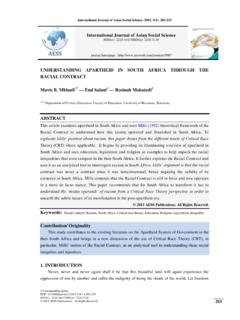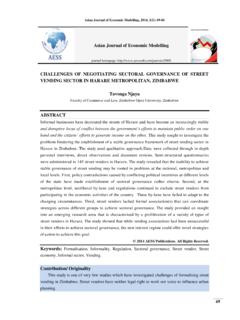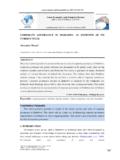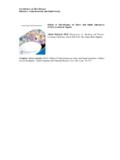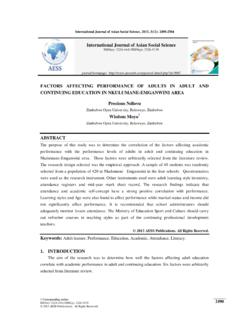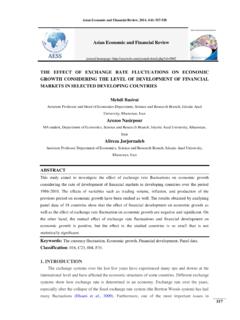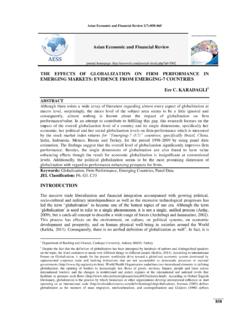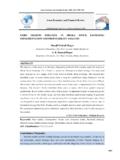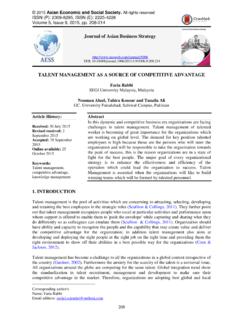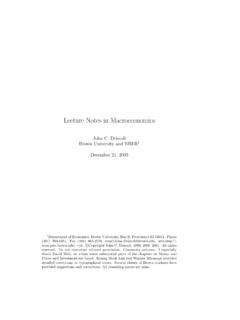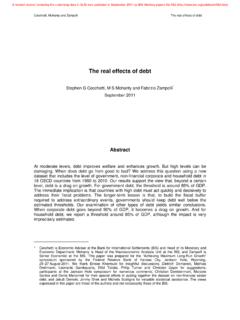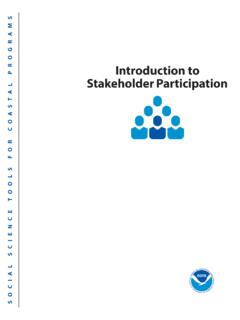Transcription of IMPACT OF INFLATION ON ECONOMIC GROWTH: A CASE …
1 Asian Journal of Empirical Research, 3(4)2013: 363-380 363 IMPACT OF INFLATION ON ECONOMIC GROWTH: A CASE STUDY OF TANZANIA Faraji KASIDI1 Kenani MWAKANEMELA2 ABSTRACT Like several other countries both industrialised and non-industrialised, one of the central objectives of macroeconomic policies in Tanzania is to promote ECONOMIC growth and to keep INFLATION at a low level. However, there has been substantial debate on whether INFLATION promotes or harms ECONOMIC growth. Motivated by this controversial, this study examined the IMPACT of INFLATION on ECONOMIC growth and established the existence of INFLATION growth relationship.
2 Time- series data for the period 1990 -2011 were used to examine the IMPACT of INFLATION on ECONOMIC growth. Correlation coefficient and co-integration technique established the relationship between INFLATION and GDP and Coefficient of elasticity were applied to measure the degree of responsiveness of change in GDP to changes in general price levels. Results suggest that INFLATION has a negative IMPACT on ECONOMIC growth. The study also revealed that there was no co-integration between INFLATION and ECONOMIC growth during the period of study. No long-run relationship between INFLATION and ECONOMIC growth in Tanzania.
3 Keywords: INFLATION , ECONOMIC growth, Co-integration, Dickey-Fuller, Phillip-Prron INTRODUCTION To attain sustainable ECONOMIC growth coupled with price stability continues to be the central objective of macroeconomic policies for most countries in the world today. Among others the emphasis given to price stability in conduct of monetary policy is with a view to promoting sustainable ECONOMIC growth as well as strengthening the purchasing power of the domestic currency (Umaru and Zubairu, 2012). The question on whether or not INFLATION is harmful to ECONOMIC growth has recently been a subject of intense debate to policy makers and macro economists.
4 Several studies have estimated a negative relationship between INFLATION and ECONOMIC 1 Institute of Accountancy Arusha. Faraji Kasidi, Institute of Accountancy Arusha, P. O. Box 2798, Tanzania Email: Asian Journal of Empirical Research journal homepage: Asian Journal of Empirical Research, 3(4)2013: 363-380 364 growth. Specifically the bone of contention is that whether INFLATION is necessary for ECONOMIC growth or it is detrimental to growth. Basically the rate of ECONOMIC growth depends primarily on the rate of capital formation and the rate of capital formation depends on the rate of savings and investment (Datta and Kumar, 2011).
5 World ECONOMIC growth and INFLATION rates have been fluctuating. Likewise, INFLATION rates have been dominating to compare with growth rates in virtually many years (Madhukar and Nagarjuna, 2011) and relationship between INFLATION and the ECONOMIC growth continued to be one of the most macroeconomic problems. Similarly, Ahmed (2010) maintains that this relationship has been argued in various ECONOMIC literatures and these arguments shown differences in relation with the condition of world economy order. In accordance with these policies, increases in the total demand caused increases in production and INFLATION too.
6 However, INFLATION was not regarded as a problem in that period rather considered as a positive IMPACT on the ECONOMIC growth which was widely accepted. Amid these views, Phillips first introduced hypothesizes that high INFLATION positively affects the ECONOMIC growth by lowering unemployment rates. In 1970s, countries with high INFLATION especially the Latin American countries begun to experience a decrease in growth rates and thus caused the emergence of the views stating that INFLATION has negative effects on the ECONOMIC growth instead of the positive effects. Evidence showing relationship between INFLATION and ECONOMIC growth from some of the Asian countries such as India showed that the growth rate of Gross Domestic Product (GDP) in India increased from in the 1970s to in the 1980s while the INFLATION rate accelerated steadily from an annual average of during the 1950s to in the 1960s and further to in the 1970s before easing marginally to in the 1980s (Prasanna and Gopakumar, 2010).
7 Likely, for the case of China, Xiao (2009) revealed that from 1961 to 1977, China s real GDP growth and real GDP per capita growth averaged at and respectively. Since 1978, China s economy grew steadily although growth rate fluctuated among the years. From 1978 to 2007, the growth rate of China s real GDP and real GDP per capita were recorded at and respectively. The experiences from East African countries, for example showed that Kenya had 5 years of very positive ECONOMIC development with four consecutive years of growth above 4%. But average annual INFLATION of Kenya increased from in June 2008 to in March 2009, before falling marginally to in July 2009.
8 Uganda was one of the faster growing economies in Africa with sustained growth averaging % since 2000 with the annual INFLATION rate decreasing in 2006 to in 2009. The average annual real GDP growth rate for Rwanda from 1990-1999 was but from 2006 to 2009, Rwanda had an annual average growth rate of (Stein, 2010). Since late 1970s, Tanzanian economy experienced many internal and external shocks. All sectors of the economy were affected by shocks, whose manifestations were, among others, large budget deficits and an imbalance between productive and non-productive activities.
9 The signs closely associated with these were high rates of INFLATION , large balance of payments (BOP) deficits, declining domestic savings, growing government expenditure, falling agricultural Asian Journal of Empirical Research, 3(4)2013: 363-380 365 produce and decreased utilization of industrial capacity which in turn hindered ECONOMIC growth (Kilindo, 1997). With regard to Tanzanian economy, Ndyeshobola (1983) indicated that between 1964 and 1969 there was very low INFLATION ( and ) on the average for the National Consumer Price Index (NCPI) and National Food Price Index (NFPI) respectively. After 1972, the NCPI rose by an average of 16% until 1975, (with peaks of 19% in 1974 and in 1975).
10 The NCPI in 1974 and 1975 seems to have been caused by the severe food problems prevailing during the second half of 1973. The NFPI reached as high as in 1974 and in 1975. Tanzania s ECONOMIC growth has shown an erratic trend as it recorded an average GDP growth rate of about 3% between 1991 and 2000, the GDP growth rate in 1992 was only , while the rates in 1996 and 2000 were and respectively (Odhiambo, 2011). Between 1952 to 1970 ECONOMIC growth rate of percent was coupled with single digit rates of official INFLATION , with the exclusion of the period of 1966-70 when the rate of INFLATION was percent.
